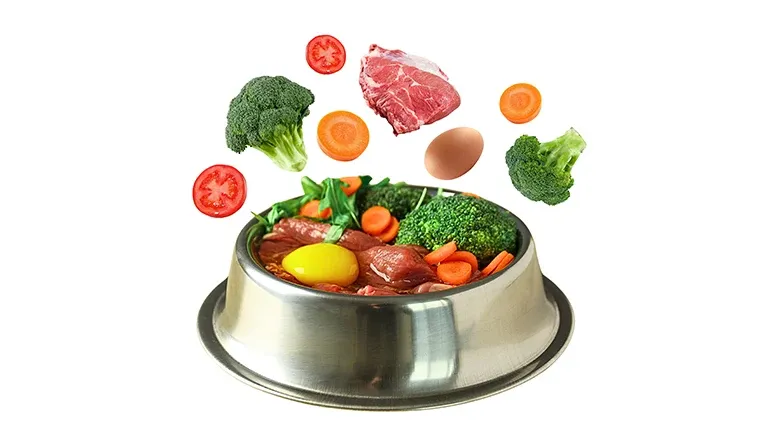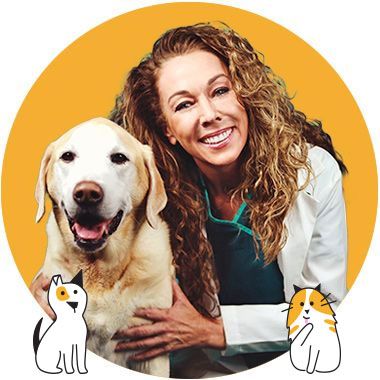The Ancient Secret Fueling Modern Pet Wellness
Long before modern medicine, practitioners discovered that the right foods could support healing. Today, that wisdom is quietly reshaping how we care for our pets.

STORY AT-A-GLANCE
- Kibble was first invented in the mid-1800s. Modern kibble as we know it today began in the 1950s with the extrusion process, offering convenience but leading to ultraprocessed diets and long-term health concerns
- Traditional Chinese Veterinary Medicine (TCVM) has a long history of using food as medicine. It balances energy, boosts immunity, and prevents disease, adopting a gentle, holistic approach to animal health
- Food therapy uses warming, cooling, and neutral foods to guide balanced nutrition that strengthens digestion, immunity, and overall wellness
- TCVM-trained veterinarians combine Eastern insight with Western diagnostics to design safe, personalized feeding plans
- Integrating Traditional Chinese and conventional allopathic veterinary medicine gives pets the best of science and nature for longer, healthier lives
The way you feed your pet reflects the love and care you give. Convenience and cost matter, but so does what is inside the bowl. Many pet parents think of food as just something in a bag or can, but have you ever looked closely at the ingredients or the manufacturing process?
Before commercial diets became the norm, dogs and cats thrived on fresh foods like meat and vegetables. Today, as concerns grow about highly processed pet foods, more owners are rediscovering that balance — combining traditional wisdom with modern nutrition to keep their fur babies healthy and happy.
What's Up with Modern Pet Diets?
Pet food has come a long way from table scraps, but convenience-driven choices have trade-offs. While high-quality kibble exists, studies show that over-reliance on ultraprocessed diets1,2 can increase health risks for pets. Understanding where these diets started and why fur parents choose them gives helpful context.
Commercial pet food began in 1860, when James Spratt created "Meat Fibrine Dog Cakes" in London after observing dogs eating ship biscuits. His biscuits, made from wheat, vegetables, and blood meal,3 were marketed as a modern solution for upper-class pet owners. By the 1950s, extrusion technology introduced ultraprocessed kibble for mass production, making dry food the norm.4 Ralston Purina used the same technology for dog food that was used to create the breakfast cereal Chex.5
After World War II, metal shortages ended canned food dominance, and extrusion became the go-to method. This high-heat, high-pressure process allowed manufacturers to create shelf-stable kibble that could last months or years. By the early 2000s, over 90% of dog food sold in the U.S. was dry kibble, driven by convenience and cost.6
Surveys show that 61% of dog owners and 65% of cat owners today mainly feed kibble, citing convenience, cost, and perceived nutrition. Many rely on the Association of American Feed Control Officials (AAFCO) standards and veterinary advice,7 but some simply prefer easier options.8 A survey of 10,000 pet owners by Dog Food Advisor found 94% believe dogs live longer on better diets, yet most prefer kibble for convenience.9
Excessive ultraprocessed kibble can lead to obesity, diabetes, kidney strain, chronic inflammation, and microbiome imbalance.10 High heat during extrusion creates harmful compounds called advanced glycation end products (AGEs), which are linked to inflammation and accelerated aging in pets.11
Understanding TCVM Food Therapy for Pets
As more pet parents learn about the risks of ultraprocessed diets, many are turning to fresh, minimally processed options. One approach gaining attention is Traditional Chinese Veterinary Medicine (TCVM) food therapy — an ancient practice rooted in Traditional Chinese Medicine that focuses on restoring balance rather than just treating symptoms.
TCVM combines acupuncture, herbal remedies, Tui-na massage, and food therapy to support overall well-being. At the 2024 Fetch dvm360 conference, Dr. Susan Bohrer, DVM, CVA, CVFT, shared that food therapy became her passion after seeing pets with chronic conditions improve when tailored diets were introduced. "Over and over, I saw improvements as I brought in food therapy to my patients," she said. Dr. Bohrer also shared that combining food therapy with conventional treatments led to noticeable improvements in chronic disease patients, including better digestion, energy, and coat health.12
Furthermore, it is a thoughtful approach that matches specific foods to a pet's age, constitution, and environment. As Long Island Veterinary Specialists (LIVS) explains, it "does not simply involve recommending generally healthy foods, but rather prescribing particular foods" tailored to each animal's unique needs.13
How Energetics Shapes Pet Diets
One of the most intriguing ideas in TCVM is that food is more than fuel. It carries an energy that influences your pet's well-being. This principle, called energetics, means every ingredient has a "temperature" (warming, cooling, or neutral) and a flavor profile that practitioners use to restore balance when a pet feels too hot, too cold, or out of balance. Below are the basic principles of energetics:14
- Temperature matters — In TCVM, "warming" or "cooling" does not refer to the physical temperature of the food; rather, it refers to the effect that the food has on the body. Warming foods such as chicken, lamb, venison, and oats boost metabolism and circulation for pets who seem cold-natured or sluggish. Cooling foods like turkey, duck, rabbit, cucumber, and barley calm inflammation and reduce irritability in pets showing signs of heat.15
- Flavor acts as medicine — Bitter cools inflammation, sweet nourishes fluids, spicy promotes circulation, salty supports kidneys and resolves stagnation or soft masses, and sour aids digestion — each targeting specific organ systems to maintain harmony.16
- Color is an indicator — In TCVM, practitioners use these color signals to guide food choices that support energy flow across organ systems, helping your furry friend feel their best.17
- Black foods — Black beans, black sesame, and seaweed nourish the kidneys and bladder, helping maintain hydration and longevity.
- Yellow and orange foods — Squash, ginger, and sweet potatoes strengthen the spleen and stomach, improving digestion and immunity.
- Green foods — Spinach, kale, and broccoli cleanse and balance the liver and gallbladder, aiding detoxification and emotional harmony.
- Red foods — Beets, cherries, and bloody meats energize the heart and boost circulation and vitality.
- White foods — Pears, turnips, and rice soothe the lungs and large intestine, easing dryness and supporting respiratory and immune health.
- Practical applications for pet health issues — Raw diets are better suited to young, active pets with strong Qi (vital energy). The strong constitution is needed to "cook" the raw food for digestion; this takes more energy than consuming and digesting cooked foods. Gently cooked diets are helpful to seniors and those with weak digestion. Food that is gently cooked is "pre-digested" while still maintaining the natural nutrients of the food.
Seasonal adjustments, such as adding cooling foods in summer, can prevent imbalances and support long-term wellness. Common cooling foods that are helpful in the summer are cucumber, watermelon, turkey, and duck. Common warming foods that are helpful in winter are venison, lamb, and chicken.18
Benefits of Food Therapy for Pets
TCVM food therapy is not just a trend; it is a practical way to improve health and prevent disease. As LIVS explains, "Food therapy's purpose is to determine each pet's distinct patterns and suggest ingredients that can benefit their individual needs and constitution."19
Food therapy also promotes a healthy weight by avoiding empty calories and focusing on nutrient-dense ingredients. According to Coopers Integrative Vet Care, this can be as simple as changing the main protein or transitioning to full home-cooked meals to support weight management.20
Finally, food therapy can add more years to your pet's life. As Chi University explains, "Food is the medicine you take every day," and the goal of food therapy is to restore and maintain balance in the body. This long-term approach can be used safely throughout a pet's lifetime.21
How to Create a Balanced Homemade Diet for Your Pet
Feeding your pet homemade food can boost digestion, energy, and overall health. Talk to your integrative veterinarian for guidance on recipes and diet creation. Aim for a balanced blend of animal proteins, vegetables, and ancient grains, with fruit if your pet enjoys it.
Use a mix of ingredients that follows general TCVM guidelines: about 30% to 50% animal protein, 25% to 35% grains or root vegetables, and 25% to 35% non-starchy vegetables. Choose meats like beef or lamb and include a small amount of organ meat for added nutrients — no more than 10% of the total diet, especially when using liver. Here are some suggestions for home-cooked recipes based on TCVM principles that you can try:22
- A cooling diet — Consists of 2 cups of cooked ground turkey, 1 cup of a cooked carbohydrate like brown rice or millet, and 1 cup of cooked vegetables such as broccoli and zucchini.
- A warming diet — Combines 2 cups of cooked ground chicken with 1 cup of oats and 1 cup of cooked vegetables like carrots and sweet potato.
- A neutral diet — Includes 2 cups of cooked ground beef, 1 cup of barley, and 1 cup of vegetables such as green beans and spinach.
Feeding amounts vary based on your dog's weight and level of activity. For adult dogs at maintenance, offer meals twice daily using a standard measuring cup. A 10-pound dog may need one-fourth cup per meal, a 25-pound dog about one-half to three-fourths cup per meal, a 50-pound dog around 1 to 1 1/2 cups per meal, and a 75-pound dog between three to four cups per meal.
Balance minerals by adding calcium to offset phosphorus in meat, using ground eggshell powder or bone meal (two parts calcium to one part phosphorus). Include healthy fats like fish oil for omega-3s and a pinch of potassium chloride for electrolytes. There are several companies on the market that provide help with recipe creation and supplement packs, including Dr. Bohrer's company Chi Dog as well as Balance It, Just Food For Dogs, and others. Talk to your integrative veterinarian about the best way to create and balance the diet for your pet.23
Blending Ancient Wisdom with Modern Medicine
TCVM treats your pet as a whole, not just a list of symptoms.24 It uses gentle, natural methods, such as food therapy, to help your pet stay balanced and healthy in the long term. On the other hand, conventional allopathic medicine is precise25 and works best when your pet needs life-saving answers and treatments, such as for injuries or sudden illnesses. The two modalities complement and complete one another.
LIVS reminds us that "Food therapy is not meant to replace traditional medicine but to enhance conventional and integrative therapies." Together, they provide your pet with the benefits of modern care combined with the healing power of nature.26
How to Start Food Therapy Safely
Introducing TCVM food therapy is exciting, but it is essential to do it thoughtfully. The Linda Mar Veterinary Hospital guide emphasizes that "feeding your dog from a Traditional Chinese Veterinary Medical perspective requires understanding balance and gradual change."27
It all begins with making an appointment with a TCVM-trained veterinarian who understands both conventional, modern diagnostics and Eastern energetics. They will assess your pet's constitution, age, and health patterns before recommending a plan. This ensures safety and effectiveness.28
You should also do this slowly since sudden changes to your pet's diet can upset digestion. Replace one ingredient or meal at a time and watch for signs of improvement or of stress in stool, energy, and skin.29 Remember to consider your pet's age because diets should change with the seasons: cooling foods in summer, warming stews in winter. Older pets often need softer, more easily digestible meals, while younger ones can handle heartier recipes.30
Your pet's health is a lifelong journey, and the choices you make today have a lasting impact. Whether you stick with high-quality kibble, explore TCVM food therapy, or try out a mix of both approaches, the goal is simple: give your furry friend the best chance at a vibrant, happy life. Start small, stay curious, and remember — balance is the key.
Sources and References
- 1 Fi Global Insights, n.d.
- 2,4,6,11 LinkedIn, September 10, 2025
- 3 Pet Food Institute, The History of Pet Food
- 5 Meat and Muscle Biology, 2023;6(3):14397
- 7 Petfood Industry, April 14, 2025
- 8 WPSGSS, April 22, 2024
- 9 Dog Food Advisor, September 3, 2025
- 10 Yahoo Lifestyle, December 20, 2024
- 12,15,18 dvm360, October 15, 2024
- 13,14,16,17,19,26 Long Island Veterinary Specialists (LIVS), Food Therapy
- 20 Natchez Trace Veterinary Services, Food Therapy
- 21 Chi University, What Is TCVM?
- 22,23 Chi Dog, DIY Vitamin and Mineral Supplement for Home Cooking
- 24,25 Oma's Pride, May 21, 2024
- 27,29,30 Linda Mar Veterinary Hospital, Feeding Your Dog from a Traditional Chinese Veterinary Medical (TCVM) Perspective
- 28 Copper's Integrative Veterinary Care, Pet Food Therapy










